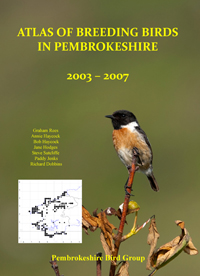Passage migrant
Mathew (1894) considered the Black-tailed Godwit to be a rare autumn visitor and Lockley et al. (1949) noted seven occurrences of single birds at Dale, Bosherston, Tenby and Skokholm, with five at Dale on 5 October 1947, which included February, March and May records.
It is now a regular passage migrant in small numbers, most frequently in autumn, between 25 June and 28 October. Numbers are small, normally up to ten birds, but larger flocks do occur with up to 35 seen regularly around Little Milford throughout August and September between 1949 and 1955. Only small numbers have occurred there since; however, about 40 put in a brief appearance on the Carew River on 20 July 1984. One or two occasionally spend the whole winter on the Cleddau Estuary, principally in the upper reaches at Hook and Carew/Cresswell.
Groups of up to ten pass through between 3 March and 8 June, with larger flocks occasionally stopping off briefly; for example 15 were at the Gann on 18 May 1985 and 25 there on 26 May 1987.
Black-tailed Godwits are not confined to the estuaries while on passage, being recorded at the offshore islands of Skokholm and Skomer, on popular bathing beaches including 18 seen at Broad Haven (north) on 2 May 1963, or passing offshore ( including 22 passing over the Smalls on 2 July 1982 and one flying in off the sea at Strumble Head on 12 September 1984). It is probable that most, if not all, are of Icelandic origin.
Donovan J.W. & Rees G.H (1994), Birds of Pembrokeshire
 Friday, September 20, 2013 at 9:08AM
Friday, September 20, 2013 at 9:08AM 


